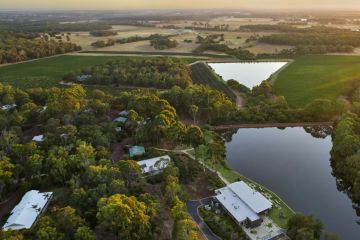Canberra's office vacancy rate falls but development needed to enliven the city
Canberra still has one of the highest office vacancy rates in Australia despite a small fall over the past six months, a new report has revealed.
The amount of unused commercial space in the nation’s capital fell from 15.3 per cent to 14.9 per cent over the second half of 2015, according to the Property Council of Australia’s latest Office Market Report, released on Thursday.
Canberra recorded the third highest vacancy rate among the country’s capital cities, behind Darwin and Perth.
The small drop comes off the back of a three-year climb in vacant office space.
Newer and larger office spaces contributed to Canberra’s falling rate, with spare A grade stock falling from 14.1 per cent to 13 per cent and B Grade stock dropping from 10.7 per cent to 10.3 per cent.
Older and smaller stock was less desirable with unused C grade office space rising from 18.7 per cent to 19.3 per cent – the highest on record – and D grade vacancies increasing from 28.4 per cent to 30 per cent.
Property Council of Australia ACT acting executive director Mary Wood linked the small drop in vacant space to the withdrawal of office stock as disused property took on a new lease on life.
Some 17,872 square metres of office space was withdrawn from the market in the last six months of 2015, while an extra 57 square metres was filled by office workers over the same period.
“With vacancy rates second only to Darwin and Perth, we’ll need a lot more withdrawals from the market to revive our CBD and town centres,” she said.
“Many of our older office blocks in the CBD in particular are tired and run down, which is why we welcome the government’s commitment to develop a City and Gateway Urban Renewal Strategy in particular.”
Sydney and Melbourne recorded the lowest vacancy rates in the country: 6.3 per cent and 7.7 per cent respectively.
Darwin, on the other hand, experienced a jump of nearly 10 per cent from 10.9 per cent to 20.7 per cent.
Ms Wood said Canberra needed to look at how Sydney and Melbourne had renewed office space interstate.
“In Sydney, Melbourne and Brisbane, private investment dollars are working to convert secondary office buildings into apartments, hotels and seniors’ housing developments,” she said.
“Empty buildings are no good for anyone. We all like to see new demand – that’s what it comes down to.”
Colliers International ACT office leasing director Tim Mutton said that while this year’s federal election might slow the commercial market for a few months, he expected Canberra’s vacancy rate to continue falling over the next 12 to 18 months.
“We’re seeing increased inquiry from the private sector and government, showing green shoots which we expect to crystallise as deals either side of the 2016 election,” he said.
“This will include activity by the ACT government, who have announced they will be taking up space in Woden, as well as coming out for new requirements in the city and Dickson.”
Similarly, JLL ACT managing director Andrew Balzanelli said private occupiers and government departments would continue to take advantage of high-quality office space, or renew existing space, particularly in central areas such as Civic or Barton.
“The impact of the government’s ‘Project Tetris’ initiative will remain present in the market this year and may contribute to a further reduction in sub-lease availability, as it did in 2015,” he said.
“It is clear that there is a renewed confidence among occupiers and investors in Canberra’s commercial property market. We expect a further strengthening of this sentiment this year, which will continue to have a positive impact on the performance of the office leasing market.”
We recommend
We thought you might like
States
Capital Cities
Capital Cities - Rentals
Popular Areas
Allhomes
More







